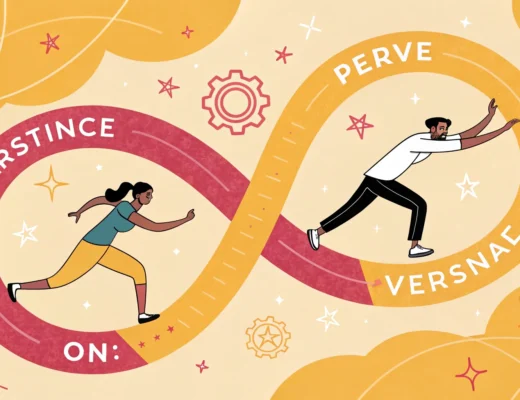The Hidden Power of Mental Wandering
When we daydream, our brains make connections between seemingly unrelated concepts. This is where true innovation happens. The “aha” moments rarely come when we’re intensely focused on a problem—they arrive when we give our minds space to play. My experience building Hawke Media repeatedly taught me this lesson. Some of our most successful marketing strategies weren’t born in brainstorming sessions but during moments when I allowed my thoughts to drift. This mental wandering isn’t laziness—it’s a different type of productivity. Research supports this view. When we daydream, our brain’s default mode network activates, which is associated with:- Enhanced creativity and problem-solving
- Better self-reflection and personal insight
- Improved planning for future goals
- Mental rest and recovery
View this post on Instagram
Finding Balance in a Distracted World
Of course, there’s a difference between productive daydreaming and simply being distracted. The key is intentionality. I’ve learned to schedule what I call “thinking time”—periods where I deliberately step away from immediate tasks to let my mind explore. This practice has become even more critical in our hyperconnected world. We’re constantly bombarded with notifications, emails, and messages that fragment our attention. Protecting your mental space is no longer optional—it’s essential for both creativity and sanity. When growing Ellie.com to a million dollars in just four months, I found that my most productive days often included periods of apparent “non-productivity”—walks without my phone, staring out windows, or simply sitting quietly. These moments weren’t wasted time; they were investments in mental clarity.Practical Ways to Harness Daydreaming
If you want to tap into the power of productive daydreaming, try these approaches:- Schedule 20-minute “thinking blocks” with no devices or distractions
- Take walks without listening to anything
- Engage in repetitive, low-focus activities like gardening or cooking
- Practice mindful daydreaming—notice where your thoughts go without judgment
- Keep a notebook handy to capture insights when they arise
The Competitive Advantage of Daydreaming
In a business landscape where everyone has access to the same information and tools, your unique perspective becomes your greatest asset. Daydreaming helps you develop that perspective by integrating your experiences and knowledge in novel ways. I’ve noticed that the entrepreneurs who stand out aren’t necessarily the ones working the most hours—they’re the ones who think differently. And thinking differently requires giving your brain the freedom to explore. So the next time you find yourself “eating flowers” for a couple of hours, don’t beat yourself up. You might just be doing the most important work of all—letting your mind create the next big idea that will transform your business or life. Remember that Einstein, Tesla, and countless other innovators were known for being notorious daydreamers. They understood what many of us forget: sometimes the mind needs to wander to find its way home to brilliance.Frequently Asked Questions
Q: How can I tell if my daydreaming is productive or just procrastination?
Productive daydreaming typically leaves you feeling energized and often generates new ideas or perspectives. If you consistently emerge from these mental wanderings with insights or solutions, that’s a good sign. Procrastination-based daydreaming usually comes with anxiety and doesn’t yield beneficial outcomes. Pay attention to how you feel afterward and what results from these mental breaks.
Q: How much time should I dedicate to daydreaming in my workday?
There’s no one-size-fits-all answer, but starting with 20-30 minutes of intentional thinking time can be effective. Some people benefit from shorter, more frequent breaks (like 10 minutes every 2 hours), while others prefer a more extended session once daily. Experiment to find what works for your thinking style and schedule.
Q: Won’t daydreaming make me less productive in a competitive business environment?
Counter-intuitively, strategic daydreaming can make you more productive by improving the quality of your thinking and decision-making. Many successful entrepreneurs report that their breakthrough ideas came during periods of mental wandering. The key is balance—combining focused work with periods that allow your mind to make new connections.
Q: How can I explain to my team or boss that I need time for daydreaming?
Frame it as “strategic thinking time” or “innovation sessions” rather than daydreaming. Explain that you’re implementing a practice used by many successful leaders to improve creative problem-solving. If possible, track and share the insights or solutions that emerge from these sessions to demonstrate their value.
Q: Are specific environments better for productive daydreaming?
Natural settings often work best, such as parks, gardens, or any area with minimal digital distractions. Some people find light background noise (like a quiet café) helps, while others need complete silence. The ideal environment should make you feel relaxed yet mentally alert. Experiment with different settings to discover where your mind wanders most productively.







